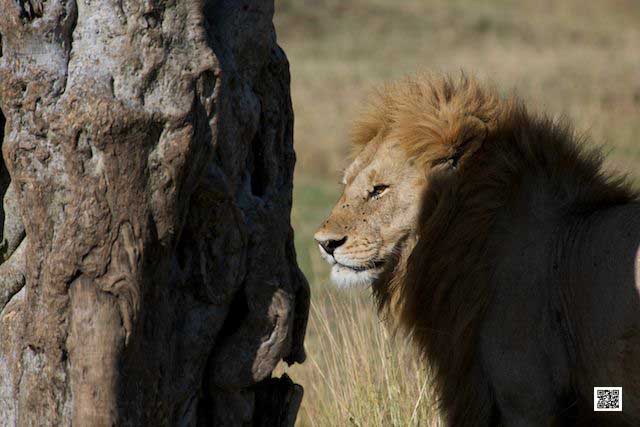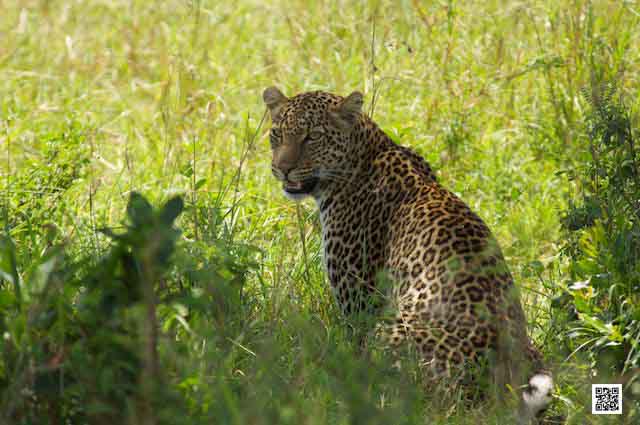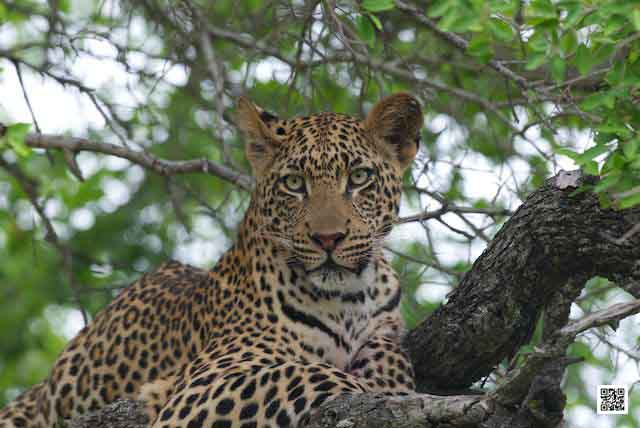20 January 2013
On Photo Safari: Auto Display
26/01/13 19:47 Filed in: Photo Tips

Have there ever been moments that you were annoyed by the display of your camera, because you couldn’t see anything, especially when it’ sunny?
After photographing we like to look at the display of the camera to see what we did. Well, we know from our photography courses that the display is not the best quality to see the image, but still it should give a good impression of the result.
On one of the photographic safaris one of the guests had a Nikon D800E and he was very angry that he couldn’t see what he did, because the display looked just useless. After playing around in the menu we found that the camera was not to blame, it had an Auto Display feature, meaning that it adjusts the brightness of the screen to the light situation automatically. It turned out that this feature is very useful and works perfectly. The Auto Display feature turned an angry photographer into a very happy photographer.
Check first what your camera can do for you before you get angry at it!
Ute Sonnenberg for www.rohoyachui.com
Photography and the Money
25/01/13 07:58 Filed in: Photography & Art

Collectors are usually careful or even skeptical with regards to fine art photography. A photograph might be reprinted in the future and the investment would be lost. But confidence is growing and experts think that the modern and contemporary photography art market will grow. Within the last year, new heights in fine art photography auctions were achieved and high prices were paid.
What does that mean? With photography now being an everyday part of life for billions of people around the globe its fine art is also more recognized and valuable for collectors. And photography itself has become big business through the cell phone market and camera equipment and it will be even bigger in the future. Photography is the future and that reflects in the art market as well with rising prices for fine art photography.
But how will photographers benefit from that? This is hard to say. Maybe a comparison from hospitality business can shed a bit light on that. Imagine you have a bar in a street where no other bar is. You think that’s great, because there is no competition, but that means also that the customers need to come especially to this street to visit your bar. How many people will do that? Some, but not many. Imagine you have a bar in a street where many other bars are. You might think that’s tough, because there is lots of competition, but it is the opposite. People know that there are many bars in the street and they have a choice, they can move around between bars the whole night if they want and that makes them come to this street. And where many customers are there is a chance that they will visit your bar too. The same works in photography. Many photographers make lots of photography and lots of photography makes lots of people interested in photography and the chances that people love your photography is higher than in times that only few people were doing photography.
Confused? Don’t think too much about it, just enjoy photography and follow your passion. The rest will come.
Ute Sonnenberg for www.rohoyachui.com
Camera Oscura - Old Masters and Photographers
24/01/13 08:47 Filed in: Photography & Art

“The camera obscura is an optical device that projects an image of its surroundings on a screen.” (via Wikipedia)
It is thought that old masters like the Dutch painter Johannes Vermeer used it to create their paintings. British artist and art historian David Hockney did intensive research on the subject and concludes that the great masterpieces were created with the help of optics and lenses. (read the article on PetaPixel)
Knowing this doesn’t make their work less amazing. One can use optics and lenses and still doesn’t know anything about composition and light. One needs to be able to see first and that explains even more why a photographer can learn composition from looking at their masterpieces. They used photography tools the same way photographers are creating their compositions nowadays. So, going to a museum and looking at the old masters is a great photography lesson. Do the Louvre and you have a whole photography course, add a photographic safari and an intensive course in natural light will finish it up. And as a result your photographs are paintings with light, maybe even masterpieces of light and composition. You actually learned from old masters.
Surprising? Check it out. You can also visit the Louvre online. Here the link: Louvre.
Ute Sonnenberg for www.rohoyachui.com
What is Success in Photography?
23/01/13 08:06 Filed in: Photography & Art

“As a self-taught filmmaker who spent the last year trying to get his first real project up and running , I've come across my fair share of disappointments, near misses, and financially tight times. As with any startup or personal project, finances are scarce and it's often your passion for the project and support from family and friends that carries it through. For all entrepreneurs (especially those on the artistic side, like me), creating something of your own isn't about making money--it's about being successful in the way that you personally define it.” (from article by Kerrin Sheldon)
Kerrin Sheldon’s definition of success is doing something that you love. In his case its filmmaking and it applies just as well to many photographers. Some are self-taught photographers, others did several photography courses or studied photography, yet it’s the passion and love for photography that connects them. They succeed in doing what they love to do and that makes them happy.
And isn’t happiness what we are looking for in life? Well, maybe a new camera or two contributes to happiness too, but the love and passion are the real fun.
Happy snapping!
Ute Sonnenberg for www.rohoyachui.com
A Story of Disruptive Innovation and Photography
22/01/13 16:59 Filed in: Insights & Opinion | Photography & Art

Good ideas often come while we are doing something very boring like driving on the freeway, washing the dishes, doing ironing or other monotone work. We get in some kind of a trance and our thoughts start wandering away and sometimes to places where ideas wait to be discovered. Our mind gets somehow switched off and the intuitive level takes over. In other words our usual thoughts are put to sleep.
Now we got this amazing idea, we quickly finish the dishes and go straight behind the computer to work the whole thing out for implementation into practice. Lets say the idea is a new kind of team building that uses photography to align the energies of the individual team members in order to accomplish the team goals. This might sound complicated, but it is not, its only photography and it will feel like a normal photography course, only the results will be more beneficial for the team. Lets call it an innovative application of photography for business.
How do others experience this innovation? Some will see immediately the fun of photography and will be curious to discover new exciting things. Others might be skeptical and might feel a bit uncomfortable, not knowing how the whole thing will work. For them it might feel disruptive, different from the usual team building they always had and reluctance might creep up, tempted to reject the innovative approach of the team building.
What will win, the reluctance or even rejection or the curiosity, fun and excitement? This is the moment when leadership is needed. At the end the leader guides the team to new success and sometimes something has to disrupt the routine to achieve new levels of achievements.
Another example: Who remembers the Reebok Pump? Here what happened when the innovation was introduced to the responsible people:
“When Continuum pitched an idea to Reebok for a new basketball shoe that would use inflated air to better support the ankle, thereby reducing injuries, the brand manager for basketball shoes said he wasn’t interested because he had never heard about a need for that from a focus group. When we proposed the idea to a high school basketball team, the response was even worse--the players openly laughed at the concept.
But when the team members actually used an early “experiential model” of the shoe during practice, they were won over by how cool it was to have a shoe form-fitted to their feet. Over time, they were even more enthusiastic as they realized they could play more confidently without fear of injury. Like that, the Reebok Pump was born.” (via Co.Create, read the article here)
The Reebok Pump could be called a disruptive innovation. It obviously disrupted the usual thinking and doing, yet when eventually tested all were happy.
There are plenty of examples like the Reebok Pump, also in art and photography. People disliked the painting style of Van Gogh. It was different from the style of other successful painters at this time and Van Gogh’s style might have been experienced as disruptive.
Long story short, disruptive innovation is something revolutionary and photography is a wonderful medium for innovation, within photography and beyond. Use it and be not discouraged when some people might feel disturbed. You might be a new Van Gogh or Rembrandt!
Keep snapping!
Ute Sonnenberg for www.rohoyachui.com
How to Learn from Sting
21/01/13 15:17 Filed in: Photography & Art

How do you create albums and photo books? How do you choose an image from a whole lot of photographs? How do you choose a photography course or art class out of the broad spectrum of choices? How do you choose your travel destination for your holiday?
I might sound far fetched to through together photo books, albums, photographs, holidays and photo courses, but they got one thing in common, the question how you start creating or making a choice. It is in essence the same intuitive process no matter if you are creating a photo book, a holiday, choosing a course or a photographic safari, your intuition makes the choice and takes the lead. And this creative process often includes a technique called semantic intuition, a brain storm technique.
Sting said in an interview that the song title comes first and then he writes the song and so do more famous writers as you can read below:
“The oddly named, but extraordinarily powerful technique was invented by Helmut Schlicksupp, an employee of the Battelle Corporation’s office in Germany. Semantic intuition is a word-combination technique where brainstormers name an idea first, and then try to figure out what the new idea might be, given its name. As counterintuitive or even as impossible as this group idea-generating strategy might sound, there’s actually a precedent for it in the creative arts.
It was in an interview with Larry King many years ago that Sting revealed that he will often get a title for a song first, and then he will go ahead and write the song. Neil Simon, in his second autobiography, revealed that he came up with the name for the play The Odd Couple first, and then wrote the play. And legendary screenwriter William Goldman adopted a similar name-it-first creative strategy when he asked his younger daughter what she wanted him to write a story about. She said “a Princess.” Then he asked his older daughter what she would like him to write a story about. She said, “a bride.” He put them together, and we got his novel--and then the movie--The Princess Bride.”
(read full article from Fast Company here)
Does that sound familiar to you? Don’t you have an idea for a photo book first and maybe even the title and then you start choosing the images and layout?
Think about it. Maybe you are very strong in semantic intuition. Use your strength and create amazing art.
Enjoy your intuition!
Ute Sonnenberg for www.rohoyachui.com
ePhoto Book: Contrast - The Light of Darkness
20/01/13 09:48 Filed in: Photography & Art

Photographic safaris bring you to the most beautiful wildlife destinations in Africa. Their beauty is striking and they teach the visitors not only about wildlife and nature, they also teach about light and contrast and sometimes light and contrast are mirrored in what the bush and the animals are experiencing through life and death.
Contrast makes us see and is what makes a photograph striking.
View & download the ephoto book here.
Ute Sonnenberg for www.rohoyachui.com